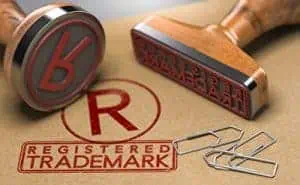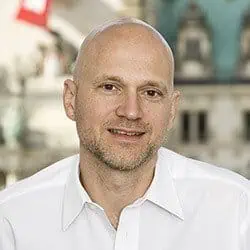Trademark protection: 5 questions, 5 answers from a specialist lawyer!
We encounter brands every day in the form of a wide variety of products and services - at home, on the street, in the supermarket. Whether we get into the car, blow our nose, book our next vacation at a travel agency or make a cup of coffee, we usually do so with our preferred brand, which is subject to trademark protection.

But what exactly is a trademark? What are the requirements for trademark protection? When is it protectable and when is it not protectable? What are Nice classes?
What happens if I infringe the protection of a trademark and what does it cost to have a trademark protected?
You can find answers to the most important questions about trademark protection in this article.
Inhalt
1. What is a trademark?
2. What are the requirements for trademark protection?
3. When is a trademark not eligible for protection?
4. What does Nice Classification mean?
5. What are the consequences of a trademark infringement?
6. How high are the costs for trademark protection?
7. Trademark protection: Leave nothing to chance!
8. Conclusion
9. FAQ
1. What is a trademark?
A trademark is a unique identifier for the trademark owner's goods and services and sets them apart from the rest of the competition. Quite a few brands have even managed to become generic terms for a certain product in the course of their history. We won't mention any names here, but you are certainly familiar with some of them.
As a stand-alone distinguishing feature, a trademark represents a clear competitive advantage that brings benefits for large and small companies alike without being a major burden on the budget if it is registered in the trademark protection register. Registration makes sense because a protected trademark may no longer be used by anyone else if they do not wish to infringe trademark law.
Trademarks are also playing an increasingly important role as an instrument in marketing campaigns, as they stand for a certain image and a particular quality in the minds of consumers. In order to secure these advantages in the long term, registration with the support of a trademark protection lawyer is recommended. Both the logo and/or the name of a company and individual products are eligible for protection.
I would be happy to help you protect your trademark
Call us now on 040 3501 6360 or send an e-mail to info@kanzlei-bennek.de.
2. What are the requirements for trademark protection?
The most common forms of trademarks are word marks, figurative marks or a mixture of word and image, whereby clear logos in particular are eligible for protection. In addition to these classic forms of appearance, numbers, sound symbols or three-dimensional designs, for example packaging shapes, as well as colors and color combinations can also be registered as protected trademarks.
The basic requirements for the protection of a trademark are
- the ability to clearly distinguish the goods and services of one provider from others
- the possibility of a graphic representation
- the guarantee that no earlier rights are infringed
With regard to the last point, it should be noted that the German Patent and Trade Mark Office (DPMA) does not check for possible infringements of earlier trade mark rights.
The obligation to search and the risk of infringement lie entirely with the applicant for trademark protection.
3. When is a trademark not eligible for protection?
This includes signs that have no distinctive character compared to other signs, but are used purely descriptively. The decisive factor here is always the overall impression created by a sign.
For some signs, there is a need to keep them available so that they can be used in normal business transactions without adverse consequences. The term "FIFA World Cup 2022", for example, is not eligible for protection, whereas the term "FIFA World Cup 2022" is. General generic terms that are merely used as common names for goods and services are also not eligible for protection.
Without exception, signs that are contrary to public policy or morality, deceptive signs, signs of international organizations, sovereign and official certification marks are excluded from registration in the trademark protection register.
Note: The above only provides a rough overview of the protectability criteria. In order to obtain certainty, each individual case must be examined in detail, as the case law on trademark protection is very extensive and confusing.
You should therefore consult an experienced trademark attorney before registering a trademark in order to avoid pitfalls, even if there is no obligation to hire an attorney for the application.
4. What does Nice Classification mean?
This is an internationally recognized classification system for the registration of trademark rights to goods and services. The corresponding agreement was concluded at a diplomatic conference in Nice in 1957 and laid down in a contract. Germany is one of the contracting states.
The "International Classification of Goods and Services for the Purposes of the Registration of Marks" - the official name of the Nice Classification - comprises 45 trademark protection classes, 34 for goods and 11 for services. An updated version has been published every year since 2013 to keep the classification up to date.
Version 2024 of the 12th edition of the Nice Classification (NCL 12-2024) came into force on January 1, 2024.
Correct classification of a trade mark ensures that the trade mark applicant or proprietor has optimum legal protection when conducting business activities with their trade mark.
Trademark protection: consult an experienced lawyer
Call us now on 040 3501 6360 or send an e-mail to info@kanzlei-bennek.de.
5. What are the consequences of a trademark infringement?
If you discover that someone is infringing the rights to your trademark with a new application, you have several options for taking action. First, you can file an opposition with the DPMA, but only within a period of three months after registration of the infringing trademark. This will be canceled if the opposition is successful.
Further cancellation proceedings at the DPMA can be considered if the infringing trade mark has not been used within five years or has been applied for in bad faith, for example to hinder competitors in their business activities in an immoral manner.
If a third party uses your registered trademark without authorization, you can send them a warning letter requesting that they cease and desist and demand a cease-and-desist declaration with a penalty clause. At the same time, you have the option of claiming damages, as the unauthorized use of your trademark may cause you significant economic damage.
6. How high are the costs for trademark protection?
The costs for trademark protection are comparatively low. An application for a maximum of three classes of goods or services costs a flat rate of 290 euros for an electronic application or 300 euros in paper form. A surcharge of 100 euros is payable for each additional class. The fees must be paid within three months of filing the application.
7. Trademark protection: Leave nothing to chance!
The subject of trademark protection is very extensive and complex and - as already mentioned - is treated in a very differentiated manner by the courts
You should therefore consult an experienced specialist lawyer for industrial property protection who is very familiar with the subject matter.
After all, if you make a profit with your trademark and infringe the rights of an older trademark, you could face considerable claims for damages.
It is best to arrange a personal appointment at our law firm to discuss all the details in detail and get the registration procedure underway together.
Do you have any questions or would you like to make an appointment?
Call us now on 040 3501 6360 or send an e-mail to info@kanzlei-bennek.de.
8. Conclusion
- Trademarks are unique identifiers for products and services.
- They offer competitive advantages and are entered in the trademark protection register.
- Trademarks represent image and quality and are important for marketing campaigns.
- Registration is recommended to secure long-term advantages.
- Logos, company names and products are eligible for protection.
- Opposition possible in the event of trademark infringement within three months of registration.
- Cancellation proceedings possible in the event of non-use or malicious registration.
- Warning and declaration to cease and desist in the event of unauthorized use.
- Claims for damages in the event of economic loss due to trademark infringement.
- Application costs for trademark protection: 290 euros for three classes, plus surcharge for additional classes.
9. FAQ
What is a trademark?
A trademark is a unique identifier for a company's goods and services. It sets a company apart from its competitors and can become a generic term for a product. Trademarks offer a competitive advantage and can be entered in the trademark protection register.
What are the requirements for trademark protection?
A trademark must be distinctive and graphically representable. It must not infringe existing trademark rights and must not contain any general terms. It must also be registered for specific goods or services.
What are Nizzaklassen?
Nizzaklassen are categories into which goods and services are divided for the trademark application. They are used to systematize and classify trademarks.
What happens if I infringe the protection of a trademark?
Various measures can be taken in the event of a trademark infringement, such as an objection, cancellation proceedings or a warning letter. An injunction and damages can be demanded.
How high are the costs for trademark protection?
The costs for the trademark application vary depending on the number of classes and the type of application. For a maximum of three classes, the application fee is a flat rate of EUR 290 for electronic applications or EUR 300 for paper applications. A surcharge is levied for additional classes.
When is a trademark protectable and when is it not protectable?
A trademark is eligible for protection if it meets the above requirements and does not infringe any existing trademark rights. For example, purely descriptive or misleading designations are not eligible for protection.
What are the consequences of trademark infringement?
The consequences of a trademark infringement can result in legal action such as warnings, injunctions and claims for damages. There may also be consequences under criminal law.
Picture credits: © Olivier Le Moal (YAYMicro) / panthermedia.net



